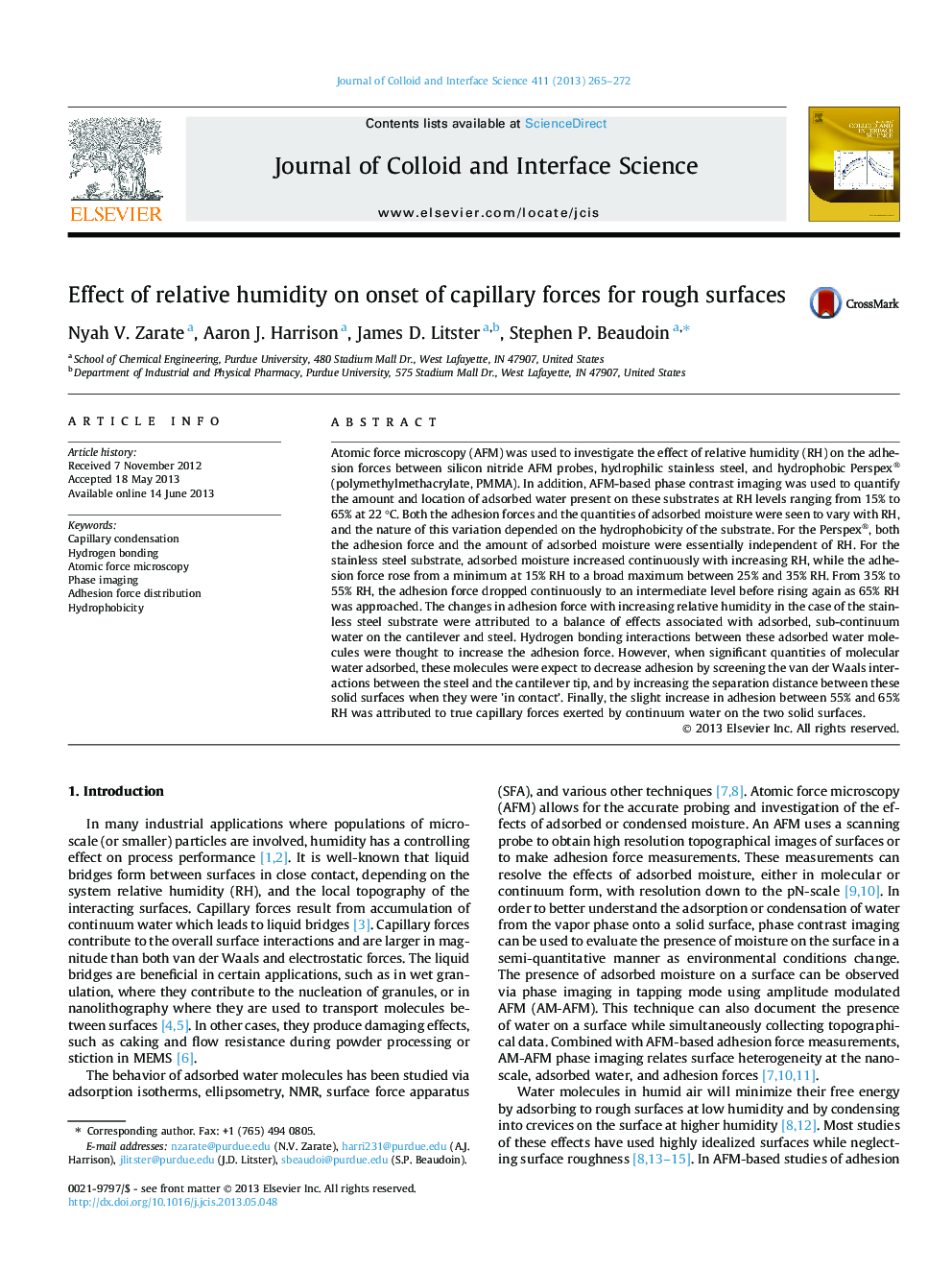| کد مقاله | کد نشریه | سال انتشار | مقاله انگلیسی | نسخه تمام متن |
|---|---|---|---|---|
| 607466 | 1454584 | 2013 | 8 صفحه PDF | دانلود رایگان |

• Phase imaging technique used to identify areas on surfaces where water accumulates.
• Water accumulation was confirmed by direct force measurements with AFM.
• Adhesion forces were quantified as a function of RH.
• The effect of RH on adhesion force was attributed to hydrogen bonding.
Atomic force microscopy (AFM) was used to investigate the effect of relative humidity (RH) on the adhesion forces between silicon nitride AFM probes, hydrophilic stainless steel, and hydrophobic Perspex® (polymethylmethacrylate, PMMA). In addition, AFM-based phase contrast imaging was used to quantify the amount and location of adsorbed water present on these substrates at RH levels ranging from 15% to 65% at 22 °C. Both the adhesion forces and the quantities of adsorbed moisture were seen to vary with RH, and the nature of this variation depended on the hydrophobicity of the substrate. For the Perspex®, both the adhesion force and the amount of adsorbed moisture were essentially independent of RH. For the stainless steel substrate, adsorbed moisture increased continuously with increasing RH, while the adhesion force rose from a minimum at 15% RH to a broad maximum between 25% and 35% RH. From 35% to 55% RH, the adhesion force dropped continuously to an intermediate level before rising again as 65% RH was approached. The changes in adhesion force with increasing relative humidity in the case of the stainless steel substrate were attributed to a balance of effects associated with adsorbed, sub-continuum water on the cantilever and steel. Hydrogen bonding interactions between these adsorbed water molecules were thought to increase the adhesion force. However, when significant quantities of molecular water adsorbed, these molecules were expect to decrease adhesion by screening the van der Waals interactions between the steel and the cantilever tip, and by increasing the separation distance between these solid surfaces when they were 'in contact'. Finally, the slight increase in adhesion between 55% and 65% RH was attributed to true capillary forces exerted by continuum water on the two solid surfaces.
Figure optionsDownload high-quality image (59 K)Download as PowerPoint slide
Journal: Journal of Colloid and Interface Science - Volume 411, 1 December 2013, Pages 265–272